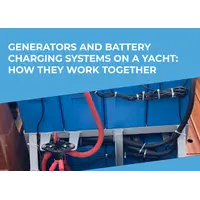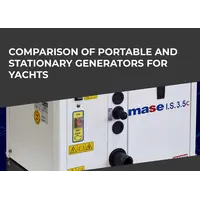In this article, we discuss various types of yachts in terms of their suitability for the charter business: their characteristics and features that the owner of a charter company should consider when making a purchase.
The advices by topRik experts are traditionally based on years of experience in charter business - using the hulls from the SimpleSail fleet, located in our own marinas in Montenegro and Croatia.
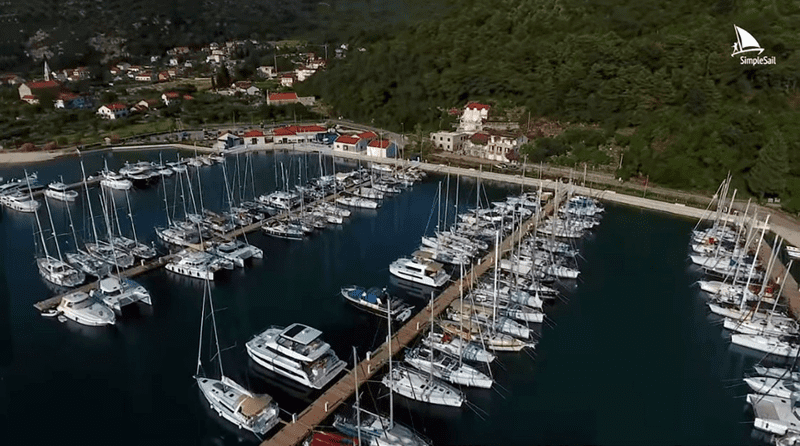
Know the Demand
Even if the owner of a charter company is a fan of extreme racing on sports sailing catamarans, when selecting boats for clients, he should be guided by their taste, not his own. And it’s no secret that demand is now beginning to move from the classics, and especially the extreme, towards increasingly more comfortable options for organizing life on board, as well as ways to control the boat.
Of course, classics and extreme sports are still in great demand, but fans of these areas still prefer to have their own boats or be part of club teams that take part in regattas and other competitions. Some manufacturers organize regattas with their own models, so their representatives directly provide boats for that purpose in various regions, such as J/Boats with its J/111.
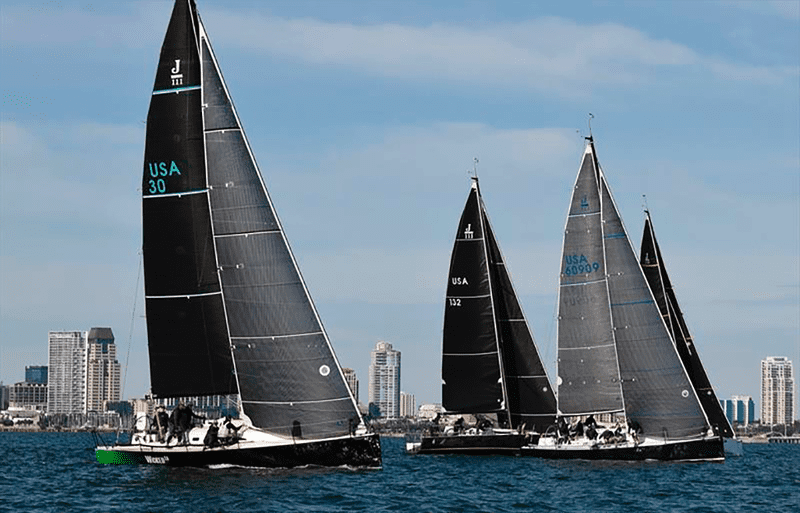
But other models can be definitely used to replenish your charter fleet from this manufacturer without the risk of losing the competition against a regional dealer. This, of course, is a very subtle nuance in the selection of boats for the charter fleet, but we just wanted to start off with this example to show how many factors must be taken into account when choosing not only manufacturers, but also individual models.
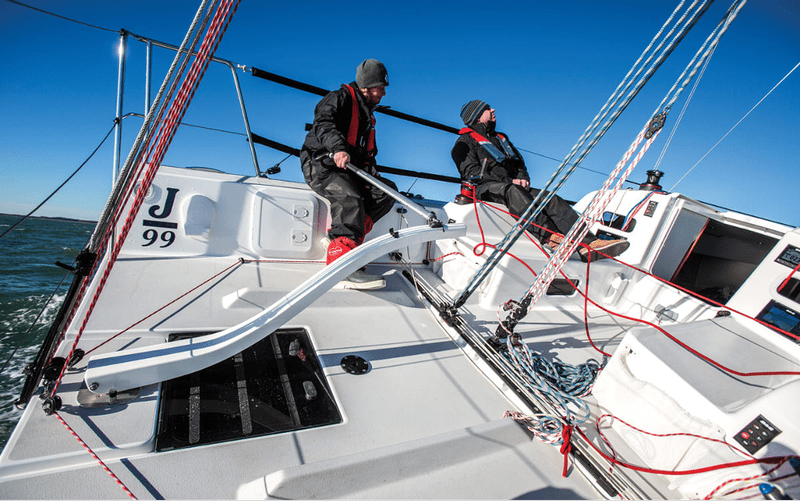
Avid explorers who live aboard for long periods of time also prefer to have their own boat, which they can customize to suit their needs, so this category is also not your main target audience here.
In this case it should be taken into account that many novice yachtsmen – graduates of skipper schools – still want to experience the romance of sailing, test their strength and improve their skills. This is a fairly decent part of the charter business clients, and it makes sense to reserve some hulls for them also.
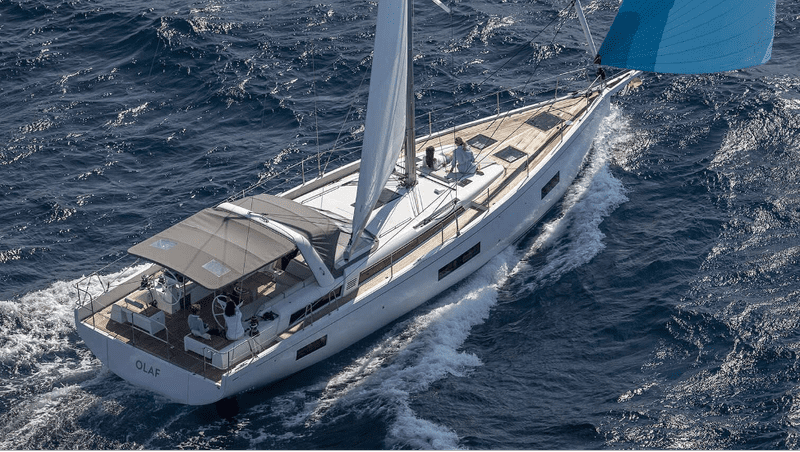
For beginners it may seem difficult to control such a huge sailboat as Beneteau Oceanis 54. Therefore, it is desirable that each of the selected manufacturers be represented by at least a small size range (in the photo below you see the Beneteau Oceanis 30.1).
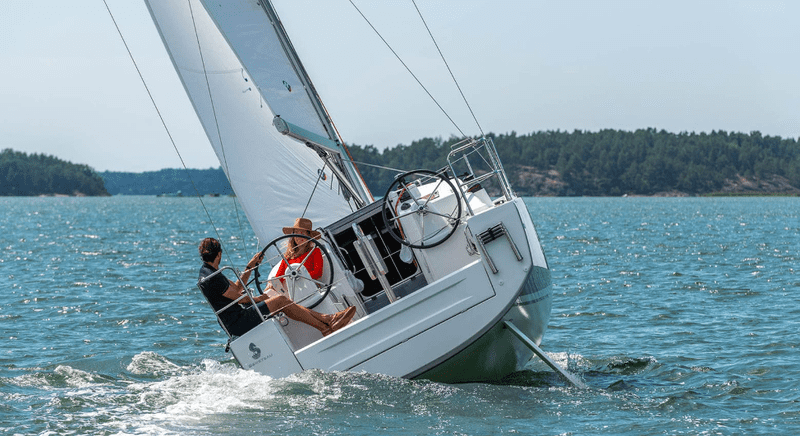
The most accurate way to follow changes in mass demand is to study trends among yacht manufacturers. What have we noticed in recent years in the boat manufacturing market? This is the reorientation of many manufacturers towards more comfort: from planing - to trawler, from sailing - to motor, from monohull - to multihulls, and with different options for combining all these characteristics: sailing trimaran, motor catamaran, trawler with several cabins with a flybridge, such as Beneteau Grand Trawler 62, etc.
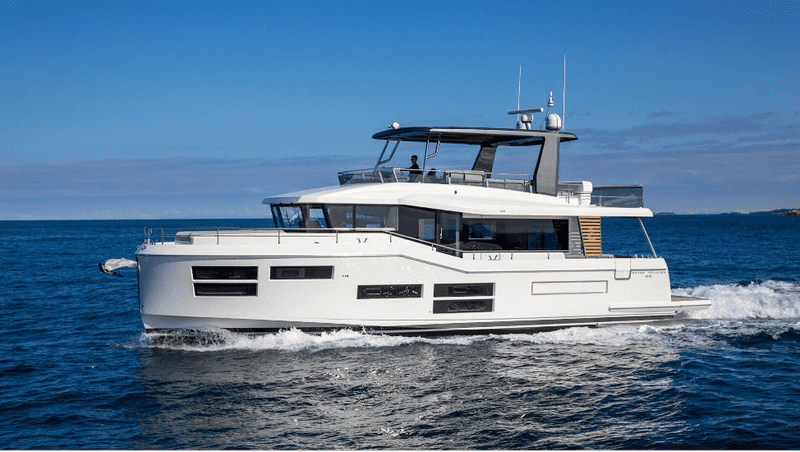
This way, the ideal modern cruise ship sought after for charter is a small cottage on the water with maximum ease of operation and maximum comfort, including large lounging and sunbathing spaces on deck and flybridge, as well as comfortable beds in numerous cabins with plenty of storage space. And yes, we are talking about catamarans. The latest models have a rigid deck in the bow instead of the usual “trampolines”. This change, brought in by shipyards like in Fountaine Pajot, Lagoon, BALI, etc. was actually likely due to the influence of charter companies, as we suspect.
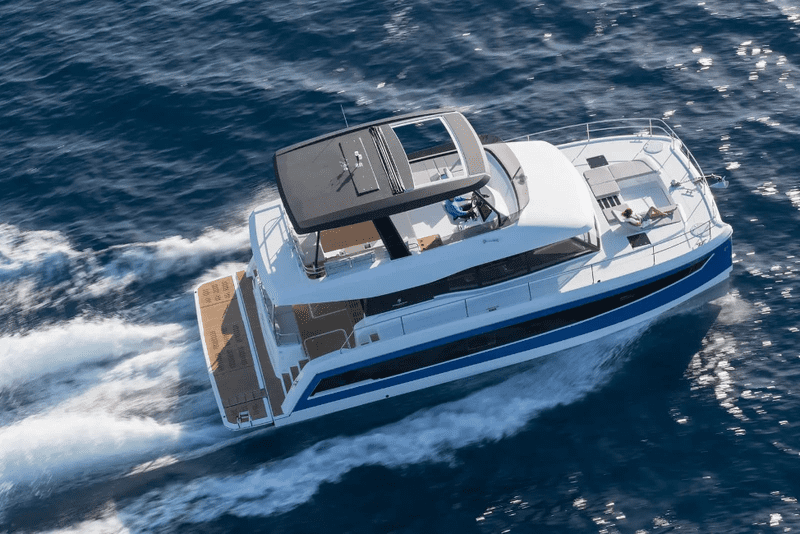
The founder of a charter company should know all categories of possible clients, among whom may be fathers of families who want to provide a comfortable and safe holiday for all family members, including children, lovers of noisy companies on board, those who like control without the hassle of sails, as well as adherents of single trips with full sailing wardrobe. It could also be an elderly couple, or maybe a group of young people with a desire to try out new windsurfing boards. And you don’t want to disappoint those who want to spend a weekend fishing at the sea... This is not everyone who wants to rent a boat - in order to satisfy the maximum number of customers, you should be well aware of the capabilities of yachts and their manufacturers.
Explore the Possibilities of Different Yacht Types
Conventionally small boats can be divided into several types according to the following parameters:
- type of drive – sailing, motor and sail-motor;
- hull designs – monohull and multihull (catamarans and trimarans);
- hull type - planing or displacement;
- design purpose according to CE classification - ocean, sea, coastal navigation, inland waters;
- intended purpose: for coastal cruises, offshore, fishing, sports, etc.
Next are classifications according to more specific parameters of each of these types: hull material, engine type, sail plan, etc. We will not go into such details, but will review the main classification with reference to the most popular manufacturers.
Sailing or Motor
Among yachtsmen, it is believed that sailing and motor driven boats symbolize sailors with different ideologies and dreams. A well-organized charter business can easily fit both ideologies.
But let's figure out what the disagreements are and why there is a conflict in the first place. Let's compare the features, advantages and disadvantages of these categories of mass-produced monohull boats.
Motor yachts are characterized, first of all, by the type of engine, and then by the concept of the hull, which can be displacement, a hybrid between displacement and planing boats, and different planing boats - on which the speed, and often the convenience, safety and method of using the vessel, depends.
Small recreational powerboats are equipped with one main engine and a small, usually external, auxiliary unit, while larger boats typically have two engines for better seaworthiness and greater safety. Very rarely they are located outboard, as on Beneteau Antares 11 in the photo below, most often you’ll see inboard designs.
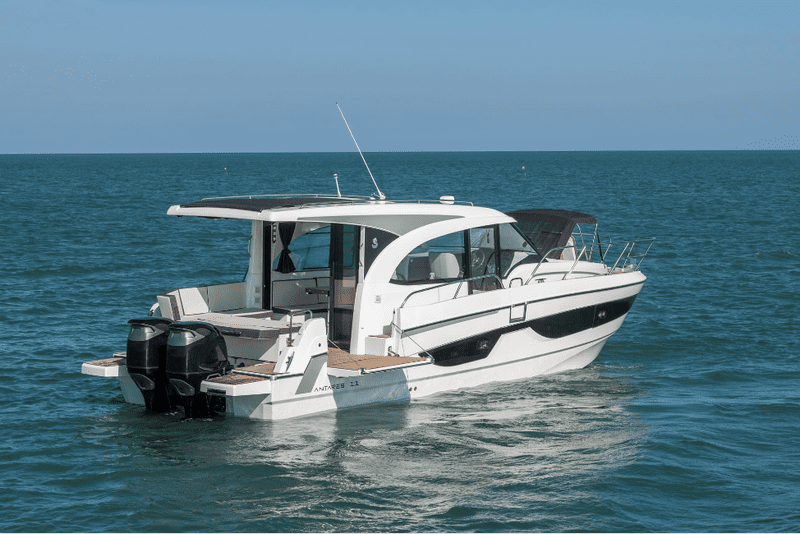
Sailing yachts are characterized by a displacement hull with a ballast keel, mast, sails and auxiliary engine.
Some clients will tell you that there’s nothing like doing it the “old school” way, while others will scoff at the idea of taking care of sails on a daily basis. Don’t argue with them though, even if you have a strong opinion yourself. Just make sure that you got both these types in your fleet, unless your particular market has strong preference towards only one type, which is rare.
Speed
The most significant difference between sailing yachts and motor vessels is speed, maximum and operational. Modern motor vessels are designed and built in order to achieve high speeds from 15 to 70 knots. Meanwhile, vessels with very high speeds are rarely found in the offers of charter companies, since the average speed of the proposed vessels is about 20 knots. This is enough for pleasant sailing and exhilarating planing.
It should be said that planing is not only a matter of pleasure, but also of efficiency, since the resistance of the hull of a planing vessel is significantly less than that of a conventional displacement vessel. A glider with its high speed allows you to leave Split in the morning, spend the afternoon swimming in some Croatian bay, run to Vis by lunchtime and return to the island of Korcula for the night.
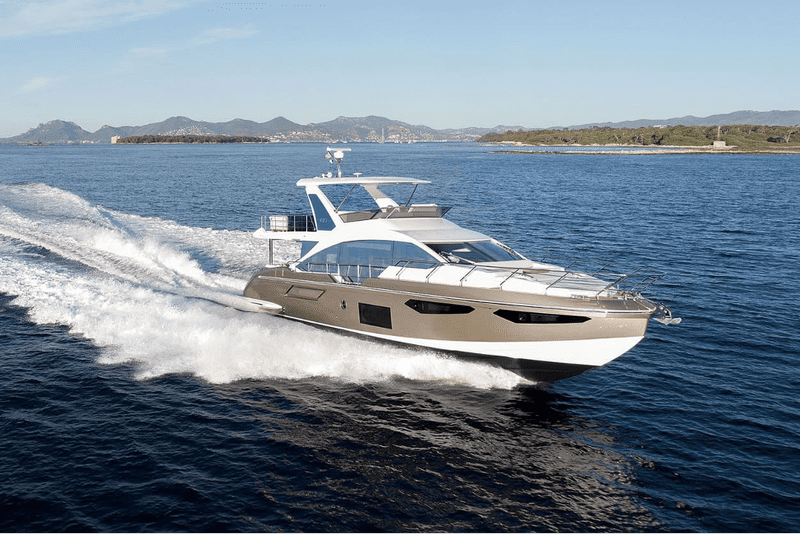
However, this advantage of motor yachts is associated with disadvantages: waves hitting the hull of the vessel at high speeds, vibration, engine noise, the smell of exhaust gases, etc.
That’s where your clients will go different ways: some will be annoyed by high fuel consumption and noise, wanting to just get from point A to point B. And others will demand to move with lightning speed, because otherwise it’s no fun. So, it’s better account for such conflicting wishes by having both fast and slow boats in your arsenal.
The speeds that sailing yachts reach are determined by the conditions of their purpose. Slow due to moderate sail surface area and a heavy hull designed for crew comfort rather than speed enjoyment, the yachts sail at speeds of 5 to 10 knots. This means that in five hours of active sailing you can cover about 40 miles, which must be taken into account when planning the trip.
In the Mediterranean waters, in particular the Adriatic Sea, where topRik marinas are located, we have rugged shores with numerous islands and a short distance between anchorages during the planned voyage, allowing you to have enough time in one day for sailing, enjoying sailing in favorable winds, swimming in some bay and, accordingly, spending the night at the open sea. This category of yachts is marked by a special philosophy of life at sea: speed is not important, but connection with the sea, wind and nature is a must.
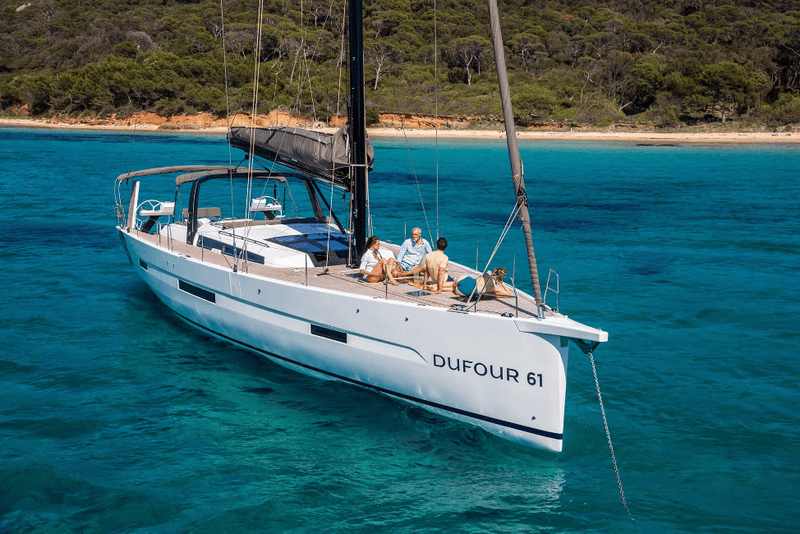
It does feel good for many clients to sail in light winds at a speed of 2-3 knots. Sailing like this is a recipe for relaxation, listening to the sound of the sea, without engine noise or exhaust smells. For the experienced and brave, who do not lower the sails and do not reduce their sailing area in winds above 20 knots, the sailing process turns into an adrenaline-filled adventure.
Maneuverability Features
Usually, clients like it when the vessel listen to the helm really well. And this is what it depends on.
The planing bottom of a motor yacht is designed to achieve high speeds. In the open sea on large waves, especially from the side or from the stern (if you sit on a wave), the yacht does not maintain a good course, causing more roll. In this case, more powerful engines that can cope with the force of the waves help. The more powerful the engines, the greater the stability of the vessel, and the faster you can avoid bad weather conditions.
When leaving and entering marinas, motor yachts with two engines are very easy to control, since when two engines propel the opposite ways, you can turn the vessel around. Moreover, larger motor yachts have electric bow thrusters, while higher-end yachts also have stern thrusters, greatly simplifying the job for your customer – they always appreciate such improvements. With them, maneuvering even such large motor yachts as Azimut Grande 26 is a real pleasure.
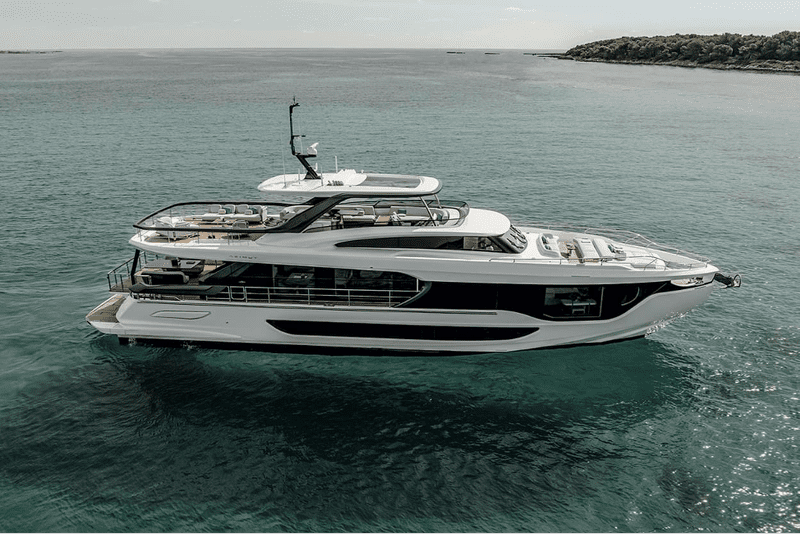
Problems arise in strong crosswinds, when, due to low speed, the vessel drifts severely – this is due to the underwater part of the vessel, which could resist drift, being much smaller than its surface part, exposed to the influence of the wind. In this case, the maneuver must be carried out quickly and decisively, and this requires experience.
Sailing yachts are designed and built on the idea of less resistance to the underwater part of the hull and greater stability under the influence of wind and waves. Due to the low center of gravity, the heavy ballast keel provides the yacht with stability and reduces wind drift, as it acts as a “submerged wing”. In addition, by increasing and decreasing the area of the sails, that is, influencing the force of the wind, your customers can adapt the speed of the yacht to the state of the sea, adhering to the rule that high speed adds stability in rough seas.
Maneuvering a sailing yacht in a marina is different from maneuvering a motor yacht. One engine compared to two on a motor yacht is a disadvantage. However, thanks to the keel, which is the center of rotation of the underwater part of the hull, and the position of the propeller located one third of the hull length from the stern, sailing yachts are still very maneuverable.
They are also disturbed little by side winds due to the favorable ratio of the underwater part of the vessel and the freeboard. If the yacht has a bow thruster, then its maneuvering capabilities are improved, as in the latest models of monohull sailboats Dufour, Beneteau, J/Boats.
It makes sense to conduct research into your potential client base and ask them on their preferences when it comes to such details.
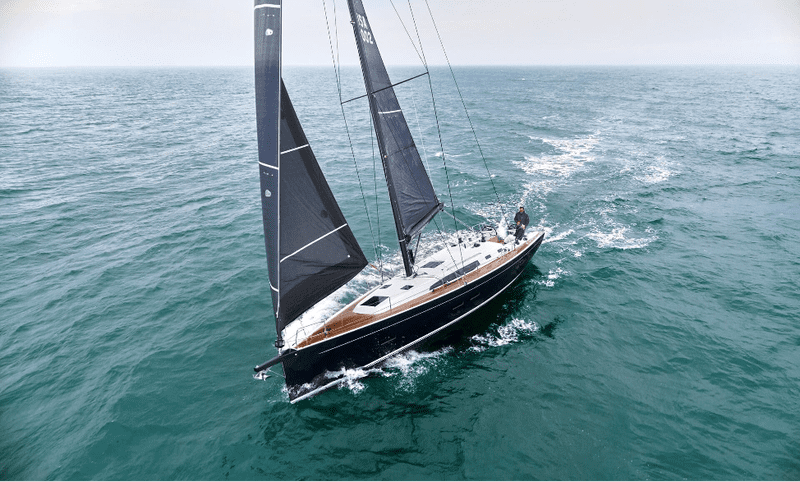
Comfort
In addition to speed, the characteristic features of motor yachts are comfort, luxurious interior decoration, large decks for sunbathing, and separate spaces on the forecastle. There is more space at the stern of the vessel (cockpit) than on sailing yachts since there’s no mast. A large table and chairs for relaxing and eating are usually placed here, as, for example, on Azimut Fly yachts.
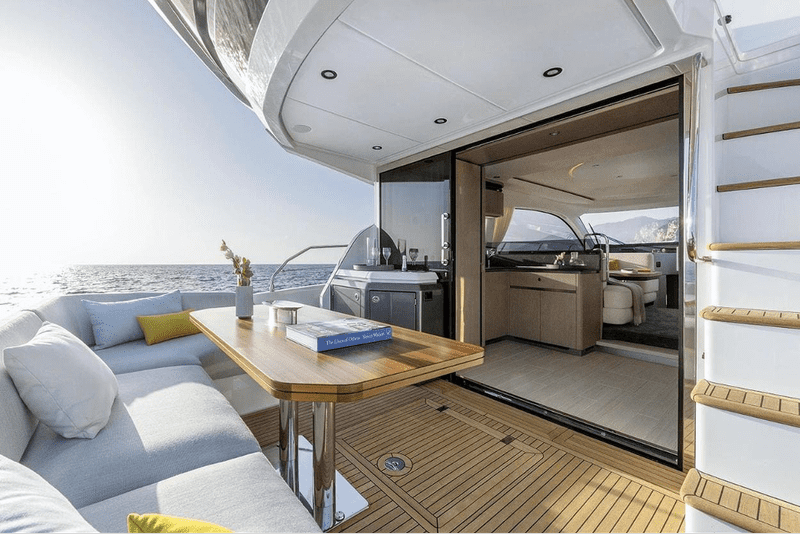
Passengers launch into the sea from an aft platform that is more spacious than a sailing yacht, if it even has one. Further, motor yachts usually have an overhead command bridge, which makes it possible to combine relaxation and control of the vessel with exploring the wonderful surroundings.
What does it mean for you? It means that if the study shows that your customers require tons of space and comfort, getting a sailing yacht might turn out to be a bad idea.
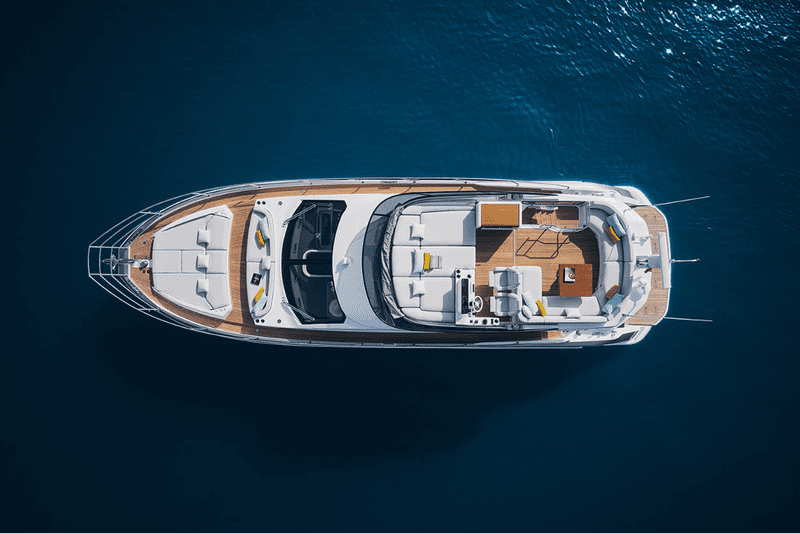
Modern sailing yachts are closer in comfort to motor yachts, but on them comfort is still subordinated to the sailing purpose. The bow deck is narrow and not suitable for sunbathing to the same extent as on a motor yacht, and the sails hang over it during movement.
In the cockpit, due to the sheet guides and winches, there is relatively little space for a table, although the comfort below decks approaches that of motor yachts.
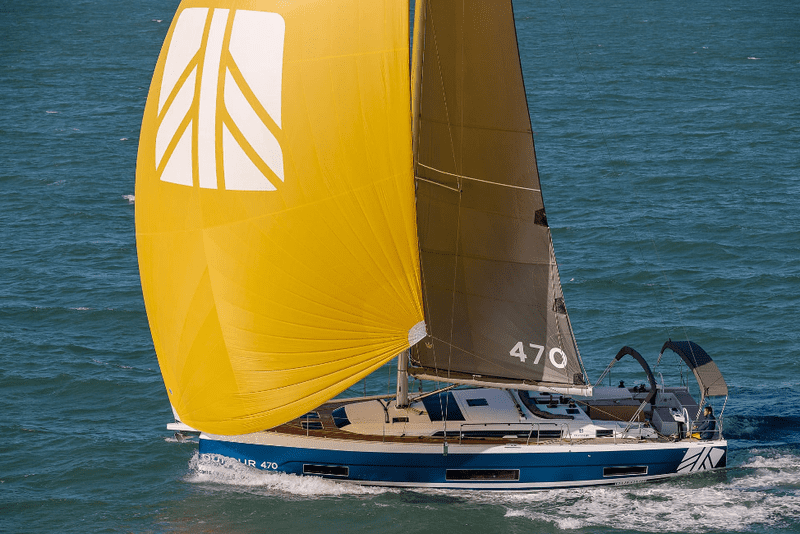
Comfortable double cabins, saloon, kitchen with gas stove, oven, refrigerator, bathrooms with showers will attract many comfort lovers. Recently, modern models are equipped with televisions and heating or air conditioning systems, as well as diesel generators, the interiors are spacious and comfortable, like on the Dufour 470.
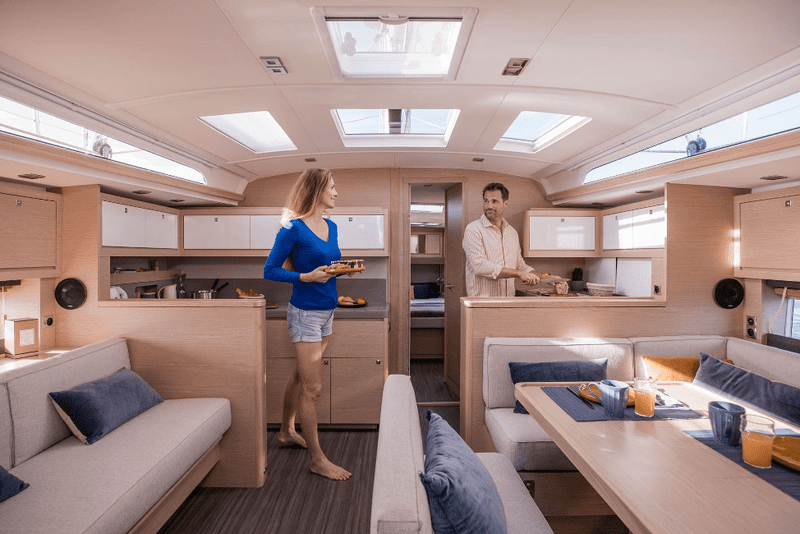
However, the main factor influencing the comfort of a sailing yacht is its position under the sails: the list can reach 20 degrees, at which the movement on the deck is quite difficult. To make it possible to cook food in such conditions, the stove is mounted on a gimbal, which allows it to be in a horizontal position when the yacht rolls. One should also pay attention to the side and deck windows: if they remain open, there is a risk of interior flooding while at sea.
Better figure out how ascetic your target audience is before ordering such comfortable vessels though – some consider comfort the killer of fun.
Rental Price
The cost of renting motor yachts is much higher than sailing yachts due to their higher price. The rental deposit is also higher. Of course, maintaining a motor yacht requires more technical labor and costs more than sailing yachts, especially due to the powerful engines that operate at high speeds to achieve high speeds. The last thing to remember is the cost of fuel for the client, which also increases the overall rental cost. This is a good prerequisite to quickly recover the costs of the yacht and start making a profit.
The cost of renting a sailing yacht is significantly lower. But fuel costs are also much lower. Due to the low cost of charter, sailing yachts are ordered much more often than motor yachts, so the number of requests will eventually translate into quality of income, and then profit.
Monohull or Multihull
There are still ongoing debates in the sailing community: which is preferable - a catamaran/trimaran or a monohull? There is no definitive answer to this question, because ideal yachts for every target market do not exist! And yet, we will try to impartially evaluate the advantages of catamarans and monohull yachts of the same type in terms of attractiveness for charter.
Since we outlined most of the features of monohull yachts in the section on sailing and motor boats, we will limit ourselves here to the characteristics of catamarans.
Pros of Multihulls
Capacity
The key factor for catamarans – the cockpit – is typically enormous in size as it spans both hulls.
The cockpit and saloon are on the same level, which, along with huge panoramic windows, enhances the feeling of light and space. The area of the forecastle is also very large; a pair of large nets are stretched between the hulls (the notorious trampolines) - an excellent platform for watching the sea and dolphins, a favorite place for renter’s children. Recently, many shipyards are replacing them with a completely rigid bow deck. Therefore, on a catamaran you can enjoy the company, but at the same time it is also quite easy to spend some time in silence, as on this Lagoon 40.
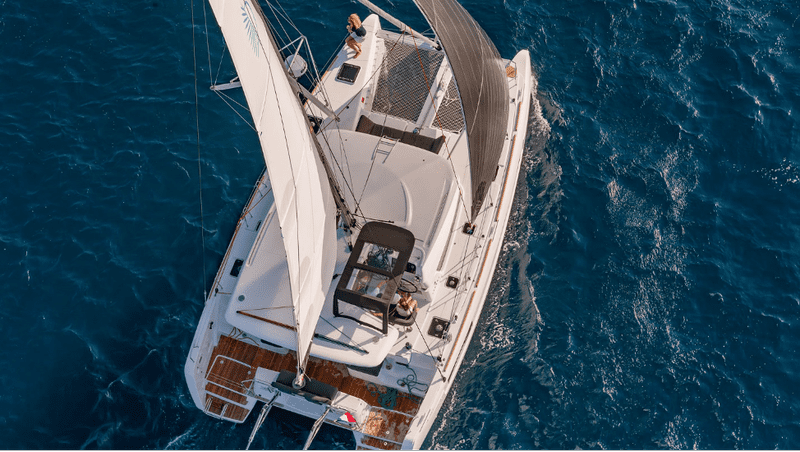
Most catamarans are equipped with sloop beams on the transom, which is generally great: there is no longer any need to tow the boat, which means the speed of the catamaran does not decrease. Lifting and launching the tender takes literally a minute, as, for example, on the Excess 15 (on a monohull it’s more difficult, and some clients like simplicity).
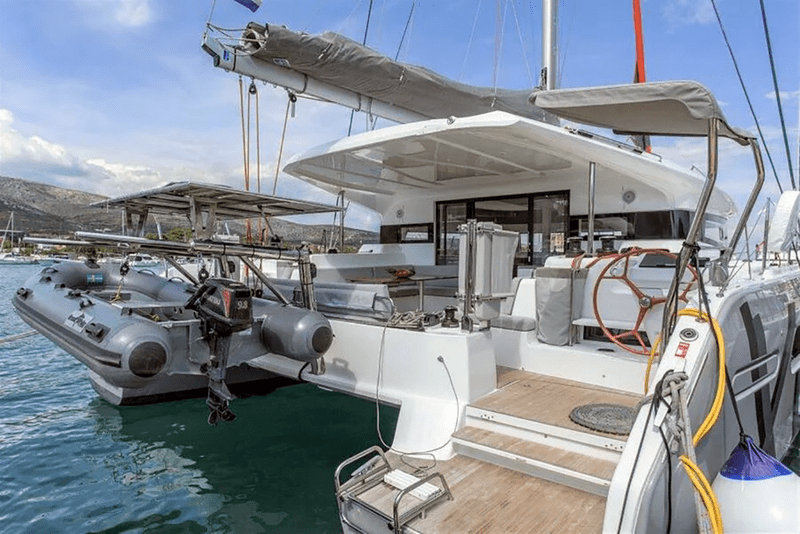
Your renters will be less susceptible to seasickness, since catamarans, unlike monohulls, hardly rock on the waves. Walking on the deck of a catamaran during movement is much easier because the boat moves smoothly. Finally, it is much more pleasant to sleep on a boat that does not list.
Changing the position of the sails and reefing is also much safer and easier. And the danger of falling overboard on a catamaran is much less than on a monohull.
The passengers will get more space in almost every part of the catamaran compared to a monohull. In addition, the ceiling heights are sufficient throughout. A typical 13-/14-meter catamaran has 4 large cabins, with rectangular double beds, each with a bathroom. A catamaran from 11 to 12 meters will have 3-4 cabins and 2-3 bathrooms.
Most catamarans have a huge saloon. Combined with the cockpit, it can comfortably accommodate up to 20 people at once!
Cooking food is much easier and more enjoyable on a catamaran: you are on the same level as everyone else, and not “deep below”. Most catamarans are not equipped with hanging stoves and ovens - there is simply no need for them, as on this Aquila 44.
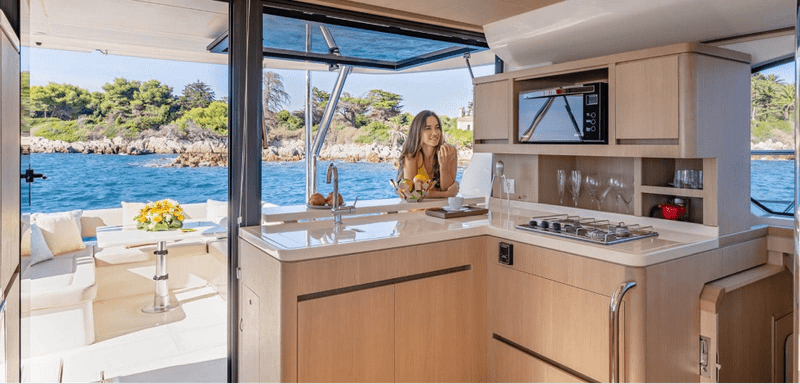
Due to the configuration of the catamaran, each cabin is completely private: nothing can be heard from the cabin next door.
Stability
Catamarans are phenomenally stable: they do not heel. This eliminates seasickness both while underway and at anchor, and also creates additional safety for children frolicking on deck.
Both at anchor and underway, a catamaran is always more stable than a monohull, which is a big advantage for older people and/or those clients that are new to yachting.
Because catamarans do not need to drag a heavy lead keel underneath to maintain an upright position, catamarans tend to be faster than similarly sized monohulls of the same type.
Speed and Maneuverability
Catamarans, without huge yacht fins, cannot sail as steeply into the wind as monohulls. However, when traveling on less acute courses, they tend to arrive at their destination in about the same time since they are going much faster. They travel a greater distance at a much higher speed. A catamaran with good quality centerboards and sails will move just as steeply as a similarly sized monohull. Its speed will also be much higher, so it will arrive at its destination earlier.
There is no doubt that the speed of catamarans is higher when powered or under sail. The cruising speed of a catamaran will generally be higher than that of a monohull.
Catamarans have a shallow draft. This means they can access places often unattainable by monohulls and can anchor closer to shore.
And finally, about the maneuverability of catamarans. With two engines spaced apart, you can turn a catamaran of any size literally around its central axis - and without the help of a rudder. Although a monohull requires speed and water area for such a maneuver.
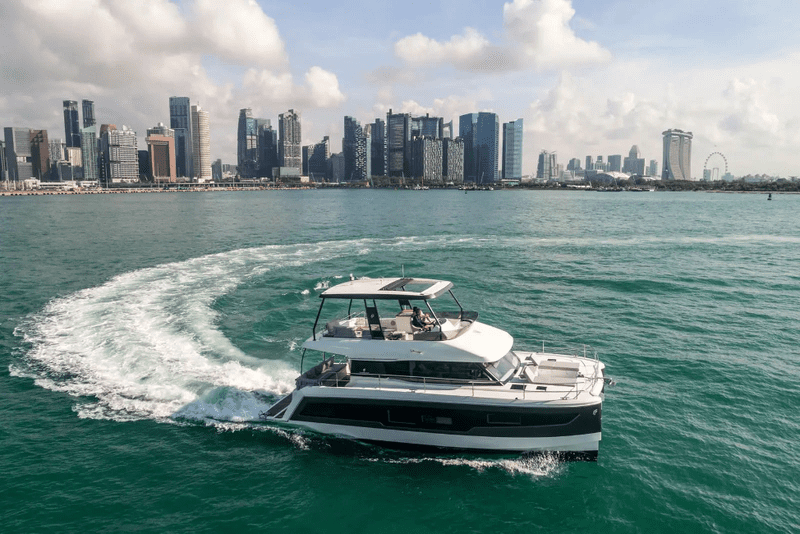
Monohull lovers have been arguing for years that multihulls aren't all that safe. This was true for the first cats of the 60s, when errors in calculations and design were still made. A properly designed and well-built catamaran is almost impossible to sink, barring a collision with a tanker. And sometimes you will have to fight myths when communicating with clients, so knowing such concerns in advance can help you change their mind.
Faster boats are also safer, since a fast boat can more easily avoid storms. A catamaran, which easily provides 220 miles per day, on the passage from Panama to Hawaii is much less exposed to storm risk than a monohull, which can hardly cover 170 miles under the same wind and wave conditions.
With a good weather forecast along the route, a multihull can avoid the worst of the weather and, in a worst-case scenario, will still be in a better position to avoid the brunt of the storm. Since most multihulls can sail at 10-15 knots in storms, they are significantly safer than boats that cannot sail more than 9 knots in similar conditions.
Engine failure on a monohull means the end of propulsion under the engine. Cruising catamarans are usually equipped with two diesel engines (in each hull). Although most yachtsmen use only one of them - to save fuel during a long passage.
Damage to the hull on a monohull is more serious and dangerous than the same damage on a multihull, which can be one of the selling points for the renters that are afraid of accidents. If one of the catamaran hulls is damaged, you have the other one afloat to maintain buoyancy.
Disadvantages of Catamarans
If your client wants an authentic, complete yachting experience, maybe you should offer him/her a monohull. The catamaran still does not convey the real feeling of yachting for many – it is “on underwater rails” as some yachtsmen say. This is because the catamaran does not heel, while monohulls do, and sometimes quite noticeably.
A catamaran usually does not sail well against the wind and requires a different mooring and anchoring technique.
Obviously, catamarans also require one and a half times more berth space than monohulls.
It is often said that a catamaran is more difficult to anchor. This is due to the fact that a catamaran takes up more area, which is affected by the force of the wind, and without a keel and ballast they tend to "bounce" in strong gusts of wind.
And yet, statistics show: the number of sales of catamarans is growing. Sailing yachtsmen are switching from monohulls to catamarans, but not vice versa. And owners of motor planing yachts often exchange one hull for two if they can sell their “fuel eater”.
So, investing in catamarans for the charter business is quite a reliable option nowadays, as evidenced by the transition of many shipyards to their production. A striking example of this are Bali catamarans, the production of which was recently launched by Catana Group, previously a well-known manufacturer of luxury monohull yachts. Bali Catamarans, created by them, in just two years surpassed the mark of 100 hulls of new models, which made it a leader in the manufacturer of boats for mass consumption.
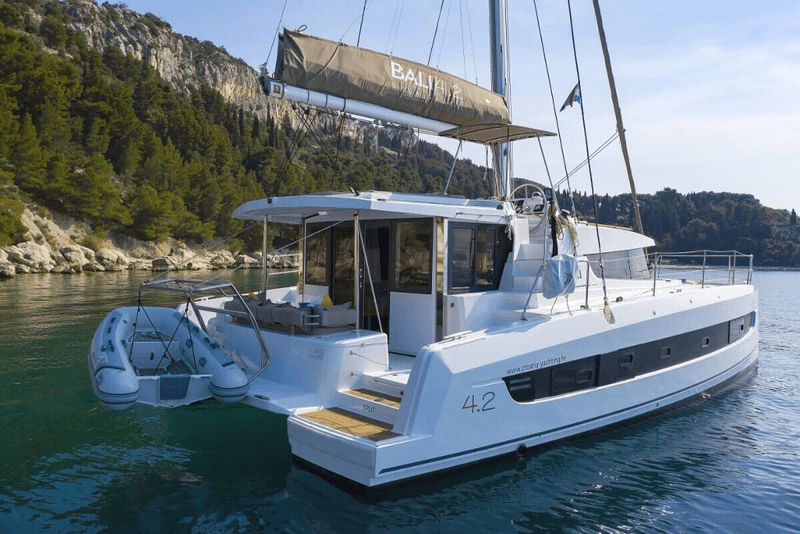
Conclusion
As you can see, there are many types of yachts out there and you should always think like a renter when considering how your fleet should look like. Imagine a family guy, or a speed lover, or an ambitious skipper that is into sailing – what would they think about, what features are important to them, what type of hull or specific options they gravitate towards?
Based on our own experience, we described how different types of yachts benefit different groups of customers, but every segment of the market is unique and your business plan better take into consideration preferences of your current and future clients and all the features that we talked about at the same time. In a way, yachts are made with people in mind, but people go on a trip with specific yachting experience in mind. It’s up to you to connect the dots between them and for that you need to keep learning as much as possible about both. We hope that this article inspired you at least a little when it comes to dealing with such a difficult task and wish you all the luck in your entrepreneurship journey!



